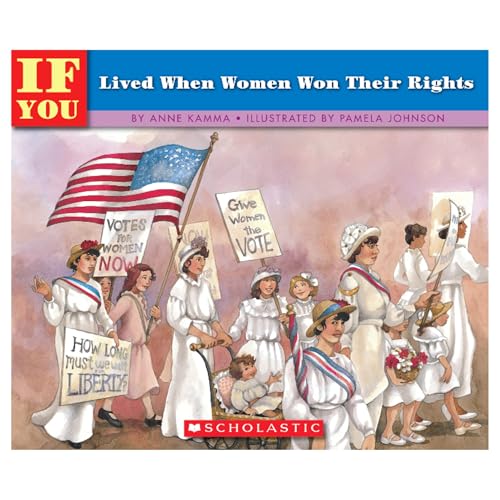Have you ever been captivated by the intricate patterns in a handmade quilt or the whispered legends tied to a finely stitched garment? Sewing isn’t just a craft—it’s a gateway to a world of folklore where each stitch weaves a story.
You’ll explore how traditions and tales are embedded in fabrics, uncovering the magic and meaning behind common motifs and techniques. From protective charms to expressions of identity, sewing folklore connects you to your past and enriches the way you create today.
Dive into the rich tapestry of stitches and stories that have been passed down through generations, and discover the timeless bond between needle and narrative.
Overview of Sewing Folklore: Stitches and Stories
Sewing folklore weaves traditional stitching techniques with rich cultural narratives. Each stitch carries significance beyond its practical use, embedding stories, beliefs, and symbols passed down through generations. Common motifs include geometric patterns for protection, floral designs symbolizing growth, and specific colors representing various meanings.
Common Stitches and Their Meanings
- Running Stitch: Symbolizes journey and progress.
- Cross-Stitch: Represents community and collaboration.
- Chain Stitch: Denotes continuity and infinity.
- Satin Stitch: Embodies elegance and prosperity.
- Backstitch: Indicates resilience and strength.
Techniques such as embroidery, quilting, and appliqué not only showcase craftsmanship but also convey folklore narratives. For example, quilting may depict local legends or family histories, while embroidery stitches can celebrate personal milestones or community values. These methods transform simple fabric into storytelling mediums, preserving heritage and identity.
Historically, sewing served as a medium for expressing solidarity, documenting experiences, and safeguarding traditions. During challenging times, quilts adorned with protective symbols provided comfort; garments featuring specific embroidery patterns affirmed cultural identity. Engaging in sewing folklore continues a long-standing tradition of weaving stories into the fabric of everyday life.
Themes Explored
Delve into the key themes that intertwine sewing with folklore, uncovering the rich layers of tradition and narrative embedded in each stitch.
Tradition and Craftsmanship
Preserving heritage, sewing techniques pass down through generations. You engage with intricate patterns, reflecting cultural identities and community values. Mastering embroidery, quilting, and knitting showcases meticulous skill, ensuring each piece honors ancestral craftsmanship. Techniques like appliqué blend artistry with tradition, maintaining the integrity of age-old methods while adapting to modern influences.
Storytelling Through Sewing
Every garment and quilt narrates a unique story, capturing personal and collective experiences. You use stitches as symbols, conveying messages of resilience, journey, and solidarity. Patterns often depict local legends, historical events, or familial bonds, making each creation a tangible piece of history. By embedding narratives into textiles, you preserve and share cultural tales, allowing sewing to serve as a powerful medium for storytelling.
Cultural Significance of Sewing in Folklore
Sewing plays a vital role in preserving cultural identities and transmitting traditions through generations. Each stitch and pattern embodies the values and stories of a community.
Regional Influences
Regional variations shape the unique styles and techniques in sewing folklore. For instance:
- Scottish Kilts: Intricate tartan patterns represent clan identities and heritage.
- Mexican Otomi Embroidery: Bright, colorful designs depict local flora, fauna, and daily life.
- Japanese Sashiko: Simple, geometric stitches reinforce garments and symbolize resilience.
- Eastern European Folk Costumes: Elaborate embroidery and applique reflect historical narratives and cultural pride.
These regional styles not only showcase craftsmanship but also serve as visual narratives of each area’s history and social values.
Symbolism in Stitches
Stitches convey deeper meanings and cultural beliefs within sewing folklore. Key examples include:
- Running Stitch: Represents journeys and transitions, often used in garments intended for travel or change.
- Backstitch: Symbolizes resilience and strength, commonly found in protective talismans and durable fabrics.
- France Stitch: Denotes luck and prosperity, frequently incorporated into items intended to bring good fortune.
- Looped Stitches: Signify community and interconnectedness, appearing in communal quilts and shared textiles.
Each stitch type carries specific symbolism, allowing sewists to embed personal and communal stories into their work.

Author’s Approach and Style
In “Sewing Folklore: Stitches and Stories,” you blend thorough research with a deep appreciation for traditional crafts to illuminate the connection between sewing and cultural narratives.
Narrative Techniques
You employ descriptive storytelling to bring each stitch and pattern to life. By detailing the origins and meanings behind various quilting and embroidery techniques, you create a vivid picture of their cultural significance. Incorporating real-life examples and historical anecdotes enhances the authenticity of your narratives. Your clear, organized structure ensures that each story flows seamlessly, making complex folklore accessible and engaging for your readers.
Integration of Folklore Elements
You seamlessly weave folklore into your discussions of sewing techniques. By highlighting specific symbols and motifs, such as the Sashiko loops or Otomi embroidery patterns, you demonstrate their roles in conveying cultural stories and values. You connect these elements to contemporary sewing practices, showing how traditional folklore continues to inspire modern craftsmanship. Additionally, you compare regional styles, illustrating how different cultures adapt similar techniques to express their unique identities. This integration underscores the timeless relevance of sewing as a medium for storytelling.
Key Stories and Stitches
Delve into the rich narratives and specialized techniques that intertwine sewing with folklore. Each story and stitch unveils a piece of cultural heritage.
Notable Tales
- The Quilt of Protection: Originating from Appalachian traditions, quilts feature patterns believed to shield families from harm. Symbols like stars and hearts represent community bonds and personal stories.
- The Weaver’s Legend: An Eastern European tale where a weaver’s masterpiece remains incomplete until the rightful owner returns, emphasizing legacy and fulfillment in craftsmanship.
- The Gullah Magic Button: In Gullah culture, buttons embroidered with intricate designs provide protection and luck. Each pattern holds specific meanings, reflecting the wearer’s aspirations and values.
Unique Sewing Techniques
- Sashiko Stitching: A Japanese technique using simple running stitches to reinforce fabric. Originally utilitarian, Sashiko evolved into an expressive art form with geometric patterns symbolizing growth and resilience.
- Navajo Embroidery: Characterized by bold diamond motifs, this method represents harmony and protection. Designs often narrate stories of the land and the weaver’s connection to their heritage.
- Baltic Chain Knotting: Traditional in Estonia, this technique uses interlocking knots to signify unity and strength. Knots are applied to garments and textiles, embedding cultural significance into each piece.
Reception and Critique
Sewing Folklore: Stitches and Stories has garnered attention for its insightful exploration of the intersection between sewing and cultural narratives. The work has been met with both enthusiasm and thoughtful critique from the community.
Reader Feedback
« Master Sewing Native American Patterns: The Complete Guide You Need
10 Shocking Ways The Rise of DIY Sewing in the 21st Century is Transforming Fashion »
Readers appreciate the detailed examination of traditional stitching techniques and their cultural significance. Common feedback highlights include:
- Engaging Content: Many find the blend of historical context and practical techniques particularly compelling.
- Educational Value: Users value the informative approach, which enhances their understanding of sewing folklore.
- Inspiring Stories: The inclusion of diverse cultural narratives inspires readers to incorporate storytelling into their own crafts.
- Visual Appeal: High-quality images and clear descriptions make the content accessible and visually engaging.
Critical Analysis
Experts commend the article for its thorough research and balanced presentation. Key points of critique include:
- Depth of Research: The comprehensive coverage of various cultural traditions demonstrates a strong foundation in sewing folklore.
- Structure and Clarity: The well-organized sections facilitate easy navigation and comprehension of complex topics.
- Cultural Sensitivity: The respectful portrayal of diverse traditions underscores the author’s commitment to authenticity.
- Areas for Expansion: Some critics suggest including more contemporary examples to bridge traditional practices with modern sewing trends.
- Source Attribution: Enhancing citations with additional authoritative sources could further strengthen the article’s credibility.
Overall, Sewing Folklore: Stitches and Stories receives positive evaluations for its informative and engaging approach, while offering constructive insights for future enhancements.
Conclusion
Embracing sewing folklore lets you connect deeply with traditions and stories that have shaped communities for generations. Each stitch you make becomes a link in a long and vibrant tapestry of heritage.
As you continue your sewing journey you’re not just creating beautiful pieces you’re preserving and sharing meaningful narratives. Let your creativity honor the past while weaving new stories for the future.

Explore the endless possibilities that sewing offers and discover how your hands can keep these rich traditions alive

















